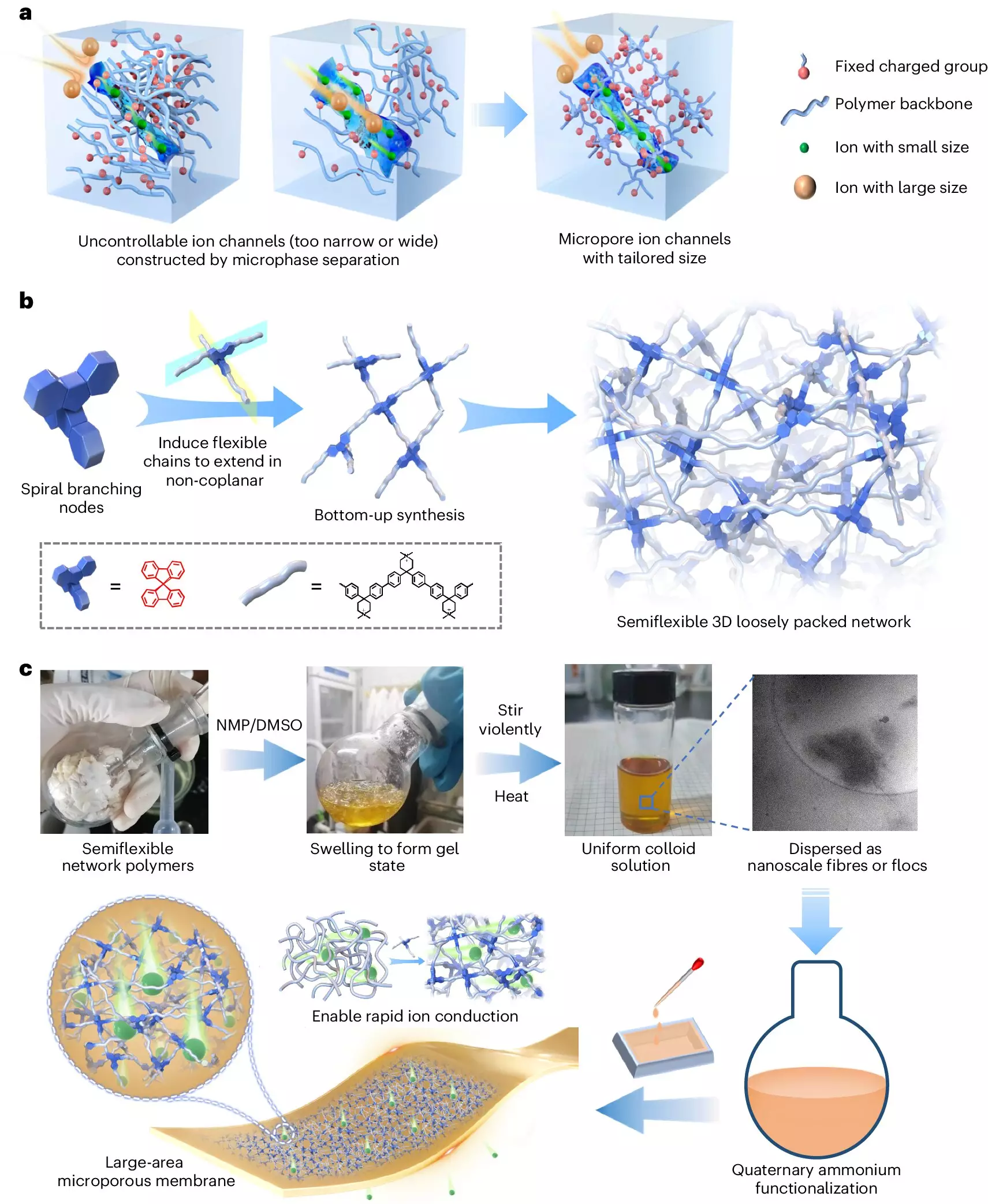In a recent study published in Nature Sustainability, a team of researchers from the University of Science and Technology of China (USTC) achieved a significant breakthrough in the development of anion exchange membranes (AEMs). Led by Prof. Xu Tongwen and Ge Xiaolin, the researchers designed a novel spiro-branched polymeric membrane that demonstrated exceptional performance in flow battery applications.
The traditional methods of developing AEMs have faced challenges in balancing ion conductivity, selectivity, and stability. Microphase separation has often led to tradeoffs that limit the overall performance of the membranes. This has highlighted the need for innovative solutions to improve the efficiency and reliability of ion conduction in various applications.
To address these challenges, the research team developed a spiro-branched polymeric membrane using stereotwisted spiro scaffolds and poly (aryl piperidinium) based on an all-carbon backbone. This unique structure aimed at enhancing the free volume within the polymer, creating highly connected sub-nanometer ion channels, and improving ion transport pathways. The synthesis process involved combining the rigidity of spiro units with the flexibility of branched chains to achieve a semi-flexible 3D network.
The researchers conducted comprehensive structural characterization using scanning electron microscopy (SEM), transmission electron microscopy (TEM), and porosity measurements. These analyses revealed the formation of highly connected sub-nanometer ion channels within the membrane, increasing the free volume crucial for efficient ion transport. The performance evaluation showed exceptional anion conductivity, exceeding 60 mS cm-1 at 30°C and reaching up to 120 mS cm-1 at 80°C. In flow battery applications, the membranes displayed superior power density, energy efficiency, and chemical stability in vanadium redox flow batteries.
This breakthrough in AEM development offers a new strategy for membrane material design, potentially addressing energy and environmental challenges. The research not only advances polymer science but also paves the way for more efficient and sustainable energy storage technologies. The innovative spiro-branched polymeric membrane could revolutionize various applications, including chemical separations, CO2 conversion, and water electrolysis for hydrogen production.
The groundbreaking research on anion exchange membranes represents a significant step towards enhancing the performance and sustainability of various energy storage systems. The novel membrane design and structural characteristics hold immense promise for future advancements in the field of polymer science and energy storage technologies.


Leave a Reply